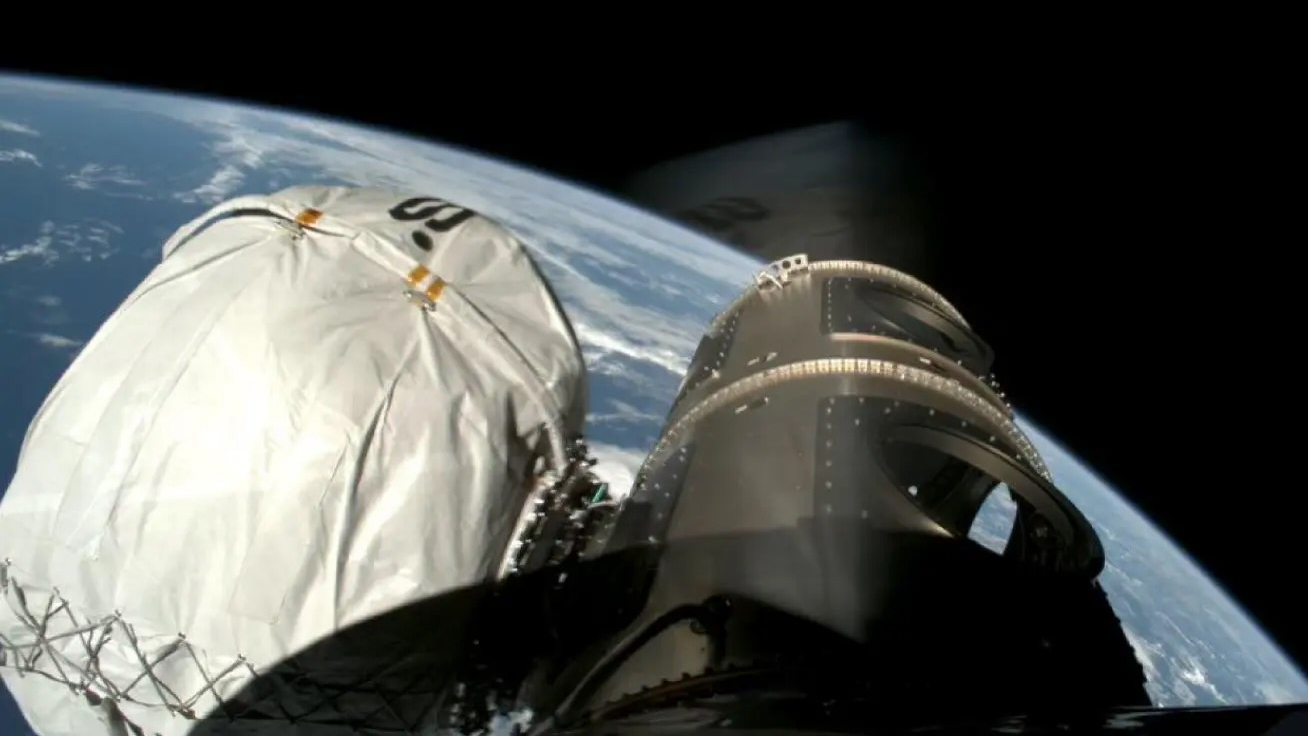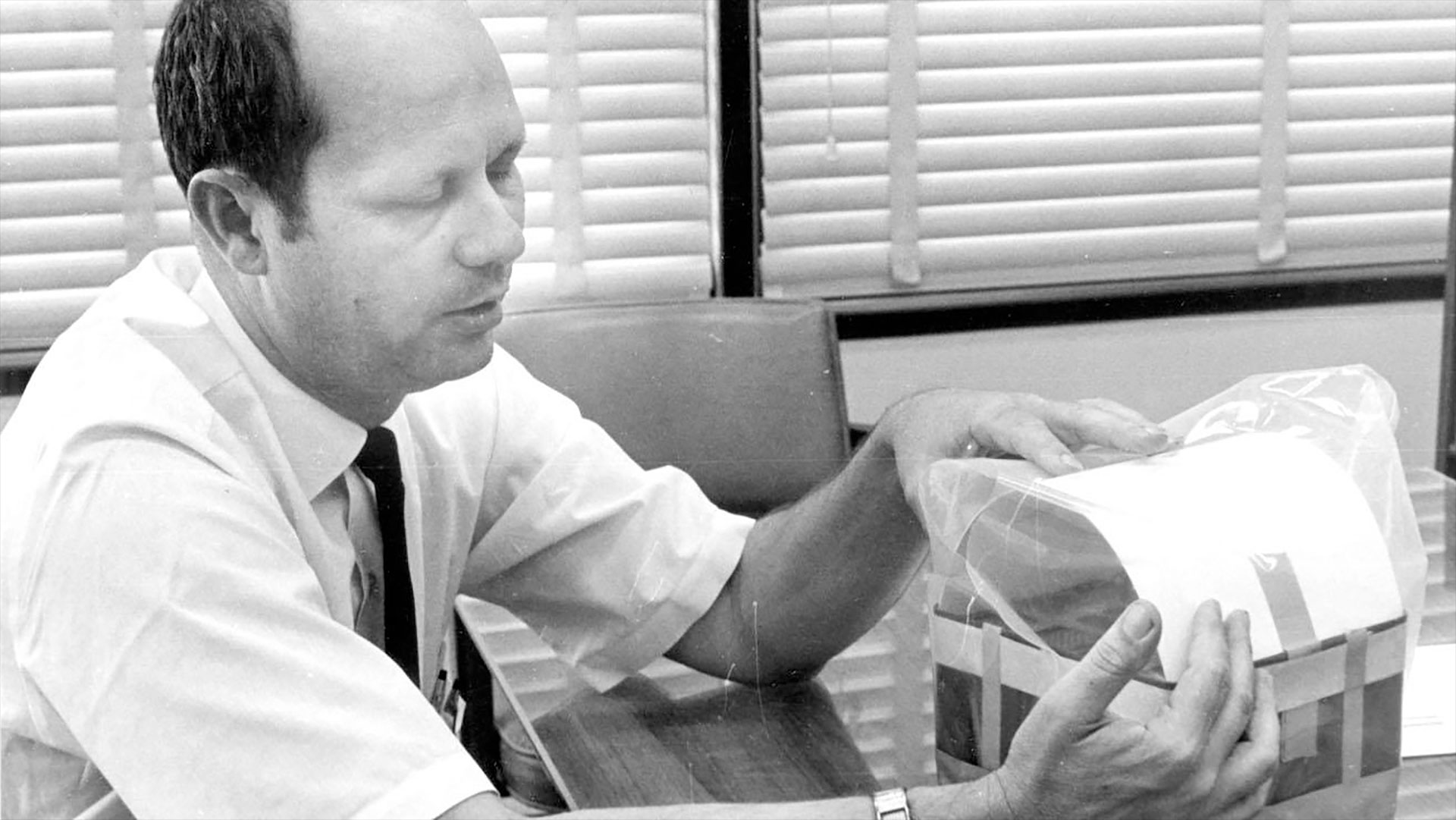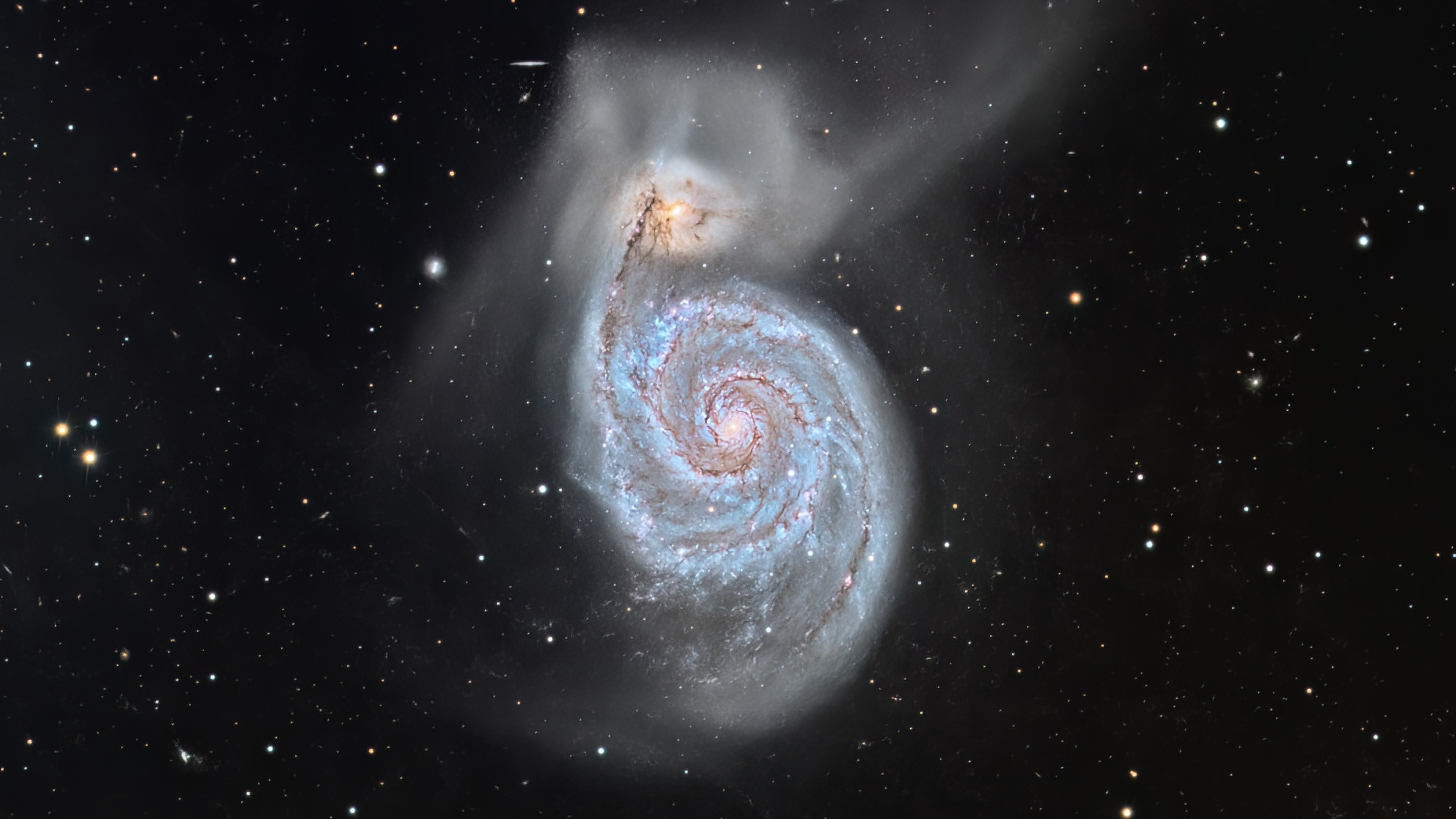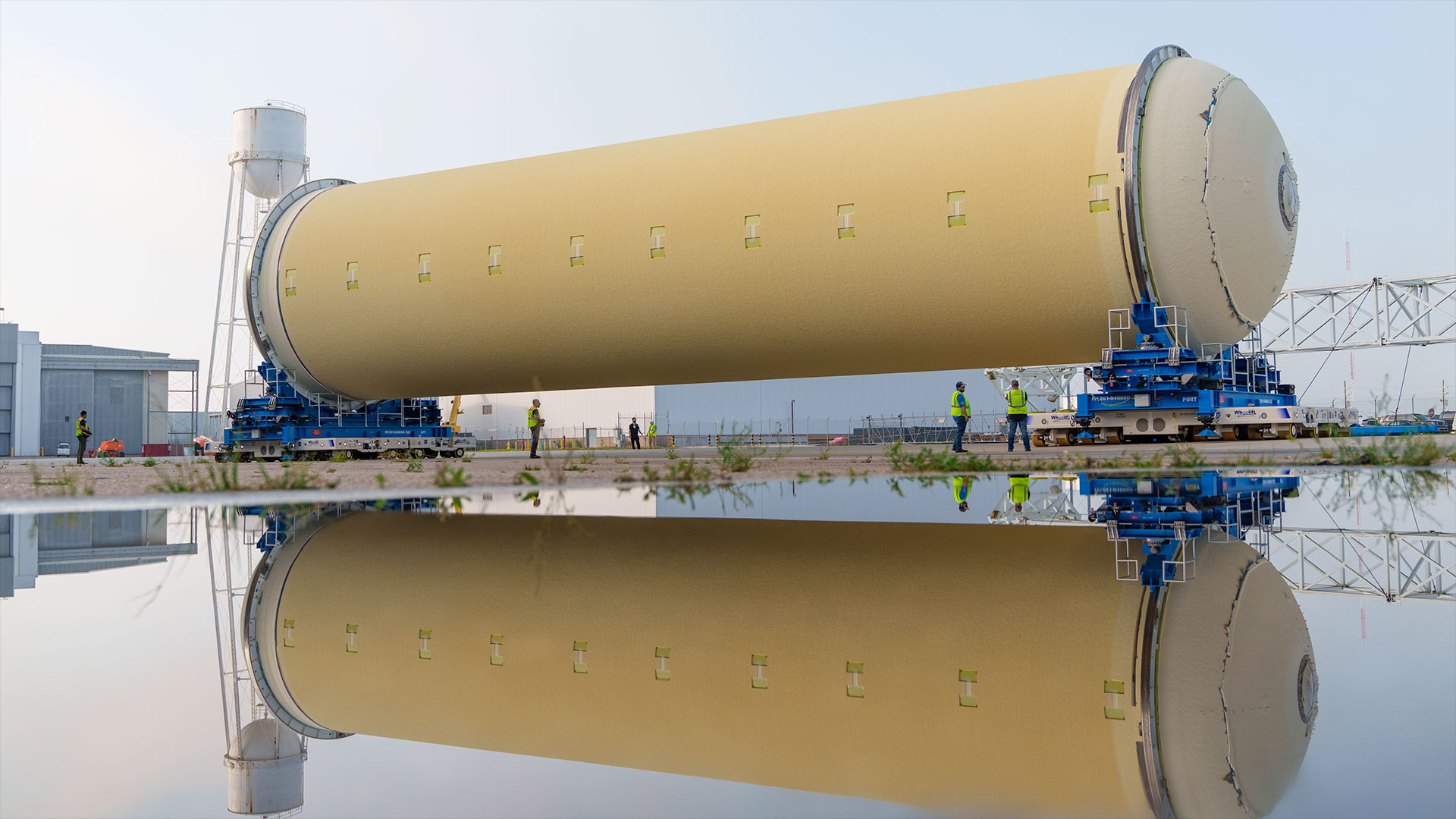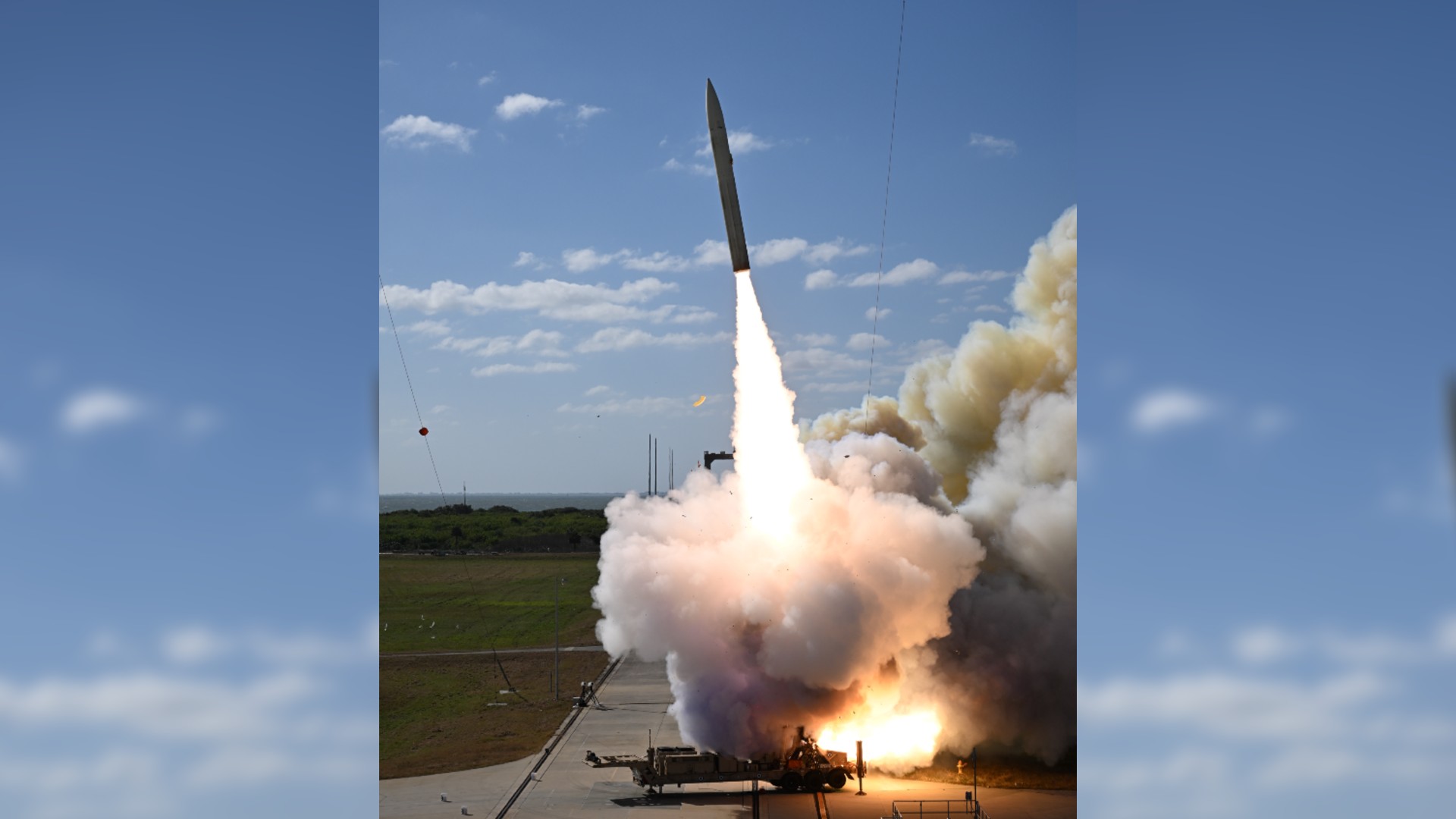Restored Atlas rocket erected on display as Mercury astronaut's ride to orbit
The exhibit is comprised of a recently-restored Atlas missile and a mock Mercury capsule.
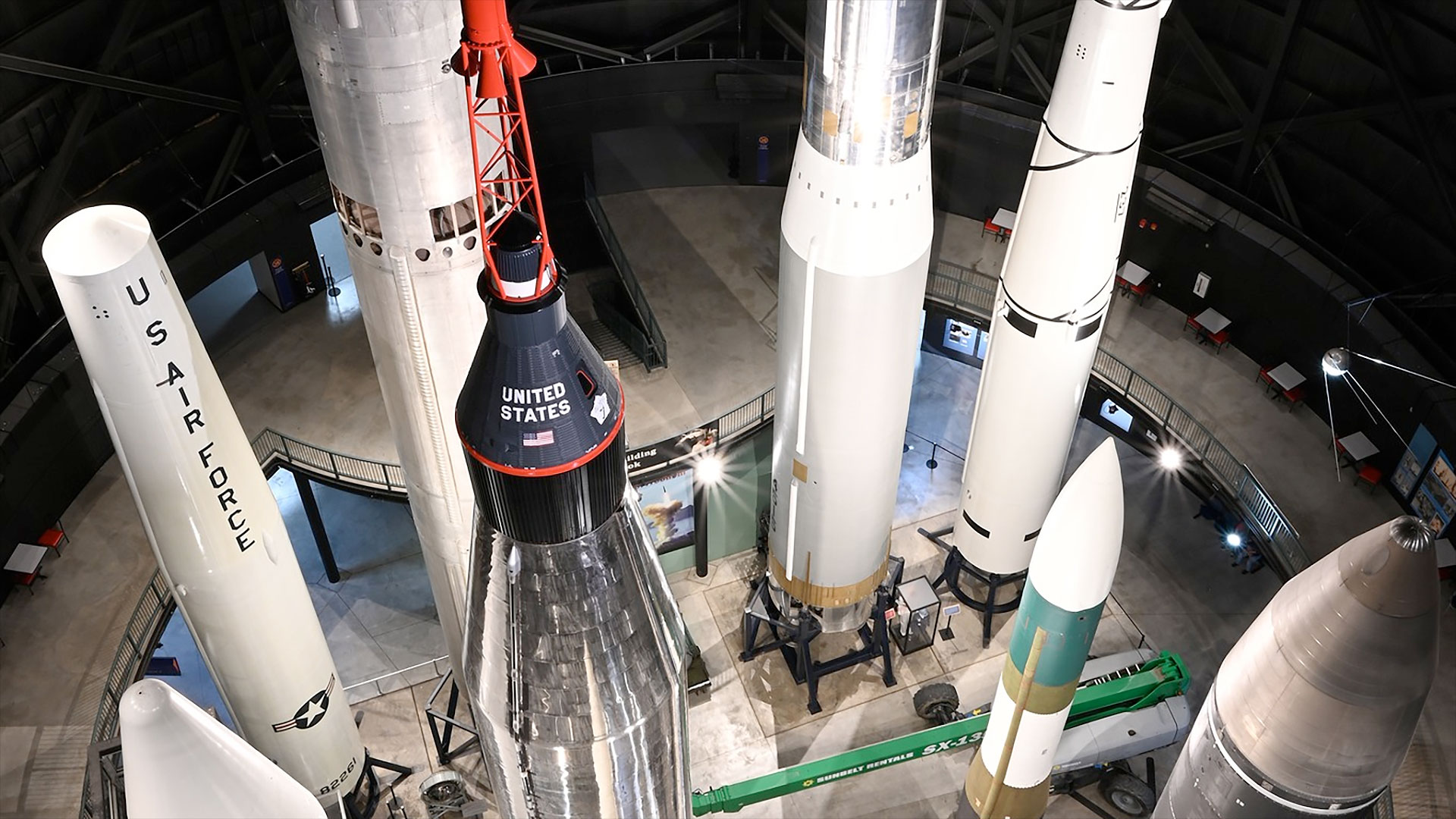
Sixty-one years after it stood ready to send NASA's last one-man mission into Earth orbit, the Mercury-Atlas 9 (MA-9) rocket is standing again.
A replica of astronaut Gordon Cooper's 1963 ride into space is now part of the vertical displays in the missile gallery at the National Museum of the U.S. Air Force in Dayton, Ohio. The exhibit is comprised of a recently-restored authentic Atlas missile and a mockup Mercury capsule with its launch escape tower.
"The museum's direction for a new space and missile interpretation in the coming years involves a deeper dive into the NASA-USAF partnership, and the MA-9 configuration is a way to tell both a NASA and an Air Force story," wrote Doug Lantry, curator and historian at the National Museum of the U.S. Air Force, in an email to collectSPACE.com. "The rocket will do interpretive double duty, allowing us to talk about the early days of human spaceflight and also the first U.S. ICBM [inter-continental ballistic missile]."
"The missile gallery will highlight the adaptable nature of several of its artifacts as both nuclear deterrents and as space launch vehicles," said Lantry.
Related: Faith 7: Gordon Cooper's 1963 Mercury-Atlas 9 Launch in Pictures
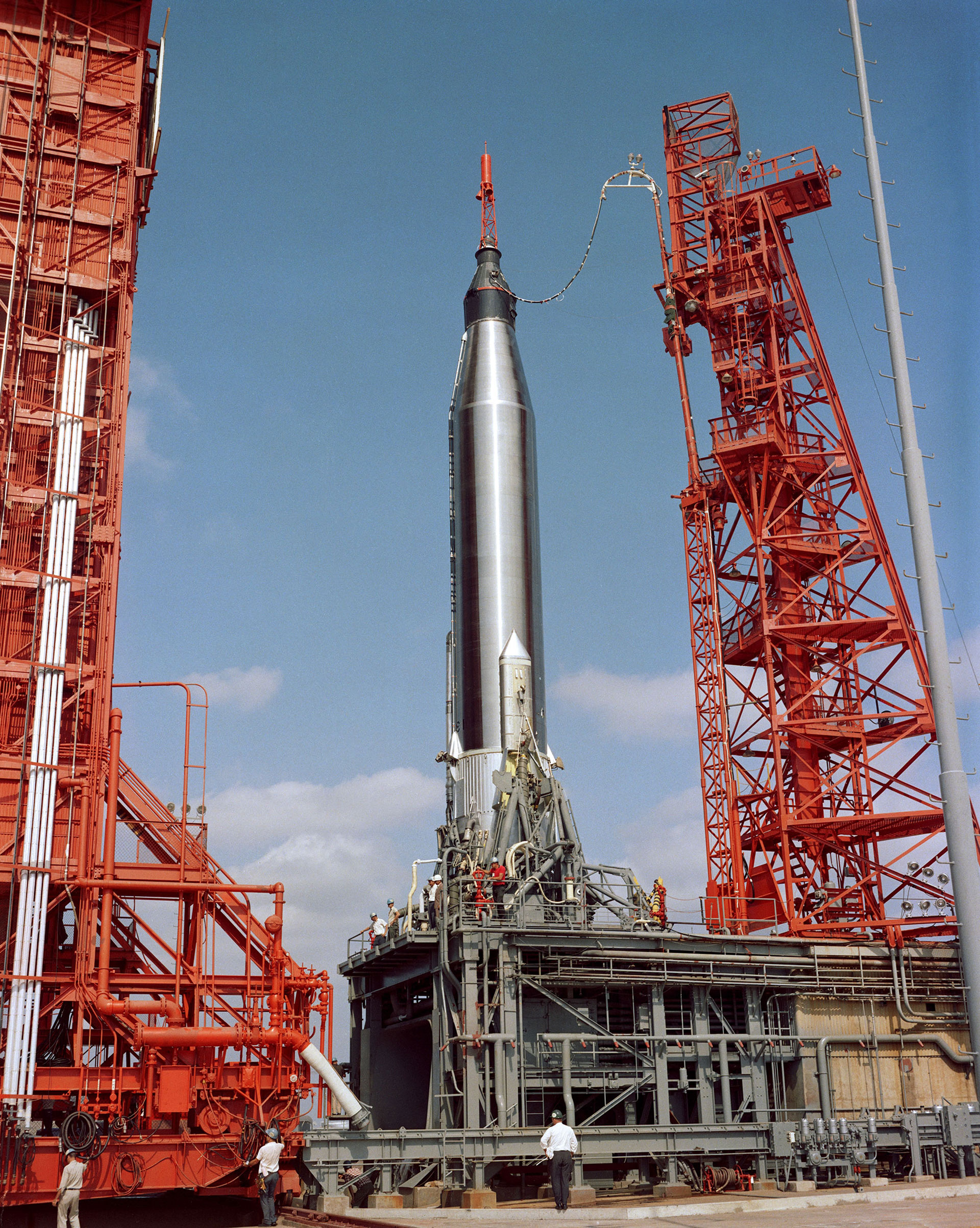
The Convair Atlas D (or LV-3B/SM-65D) went on public display on Tuesday (April 30), just days after it was delivered by truck from Thomarios, a Copley, Ohio-based construction company that specializes in the restoration of historic airplanes and spacecraft. For the past few years, the team at Thomarios has worked to prepare the Atlas for exhibit, including inspecting its internal support frame that replaces having to pressurize the rocket (as was needed when the vehicle was flightworthy).
"Thomarios was aimed at bringing this significant piece of space exploration history back to its former glory. The process involved intricate refurbishments, ensuring that every component of the rocket mirrors the operational and aesthetic conditions of its original state in 1963," reads a statement on the company's website. "Thomarios was proud to play a pivotal role in preserving and showcasing this iconic artifact."
On Monday (April 29), a week after the rocket's arrival, a crane was used to raise the 95.4-foot-tall (29-meter) Atlas upright and position it among the eight other missiles in the gallery. Designed to resemble a silo, the 140-foot-tall (43-meter) room also includes a Titan II like the type that was converted for NASA's follow-on two-man program, Gemini.
Following the addition of the replica Mercury spacecraft, a model of the capsule's bright orange launch escape system tower was placed atop the stack on Tuesday morning, completing the display. The museum then reopened the missile gallery to the public, offering visitors their first look at the Mercury-Atlas on display.
"Who needs a new reason to visit the National Museum of the U.S. Air Force?" the institution teased on its social media feeds. "The Atlas installation is complete and the Missile Gallery is open!"
On May 15, 1963, the real Mercury-Atlas 9 lifted off at 8:04 a.m. EST from Launch Complex 14 at Cape Canaveral in Florida. Gordon Cooper, a then-major in the U.S. Air Force, completed 22 orbits of Earth aboard "Faith 7," the name he had given his spacecraft, over the course of 34 hours and 19 minutes. He was the last NASA astronaut to fly a solo space mission.
Cooper was also the fourth and last astronaut to ride an Atlas into space, a record that will be broken this month when Barry "Butch" Wilmore and Sunita Williams launch aboard Boeing's CST-100 Starliner commercial spacecraft atop a United Launch Alliance (ULA) Atlas V rocket on a flight to the International Space Station.
Cooper's flown "Faith 7" spacecraft is today on loan by the Smithsonian to Space Center Houston in Texas. The Atlas (130-D) that launched the mission fell to the ocean and its debris sank to the seafloor as part of the normal plan for the flight.
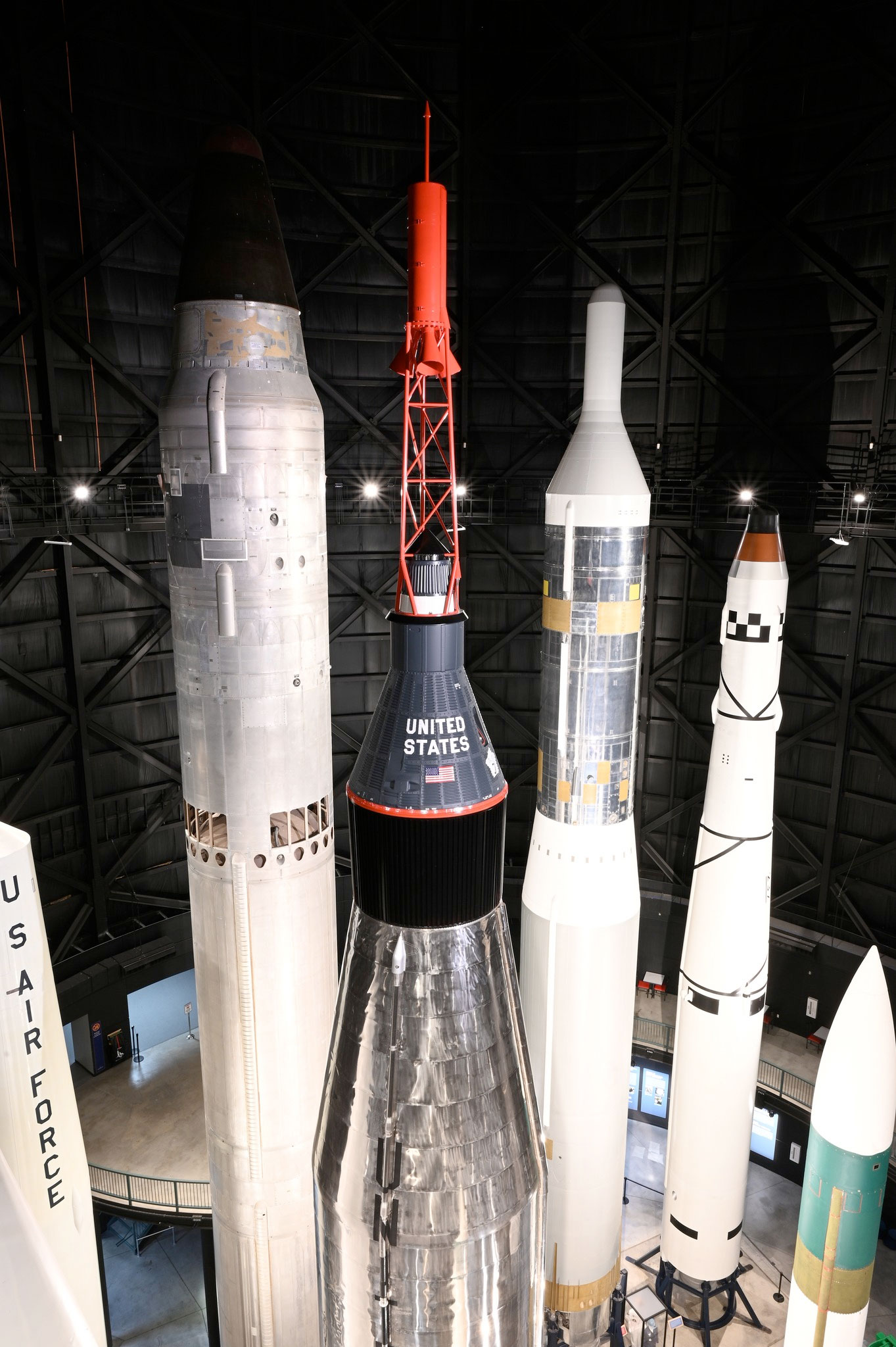
The Mercury-Atlas 9 exhibit at the National Museum of the U.S. Air Force is one of only four such displays of the astronaut launch vehicle now standing. The Kennedy Space Center Visitor Complex in Florida, Luis A. Ferre Science Park in Puerto Rico and New York Hall of Science in New York City also exhibit Mercury-Atlas configured boosters. The latter was originally stood up for the 1964 World's Fair and was restored by Thomarios in 2003 to resemble John Glenn's Mercury-Atlas 6 rocket.
In addition to the replica Mercury-Atlas 9, the National Museum of U.S. Air Force also displays the flown Apollo 15 command module "Endeavour," NASA's Crew Compartment Trainer-1, which was used to train space shuttle crews and Mercury spacecraft no. 17 that while never flown contributed parts used on board Cooper's "Faith 7" capsule. The museum also has a second Atlas missile in its archives.
Follow collectSPACE.com on Facebook and on Twitter at @collectSPACE. Copyright 2024 collectSPACE.com. All rights reserved.
Get the Space.com Newsletter
Breaking space news, the latest updates on rocket launches, skywatching events and more!
Join our Space Forums to keep talking space on the latest missions, night sky and more! And if you have a news tip, correction or comment, let us know at: community@space.com.

Robert Pearlman is a space historian, journalist and the founder and editor of collectSPACE.com, a daily news publication and community devoted to space history with a particular focus on how and where space exploration intersects with pop culture. Pearlman is also a contributing writer for Space.com and co-author of "Space Stations: The Art, Science, and Reality of Working in Space” published by Smithsonian Books in 2018.In 2009, he was inducted into the U.S. Space Camp Hall of Fame in Huntsville, Alabama. In 2021, he was honored by the American Astronautical Society with the Ordway Award for Sustained Excellence in Spaceflight History. In 2023, the National Space Club Florida Committee recognized Pearlman with the Kolcum News and Communications Award for excellence in telling the space story along the Space Coast and throughout the world.

